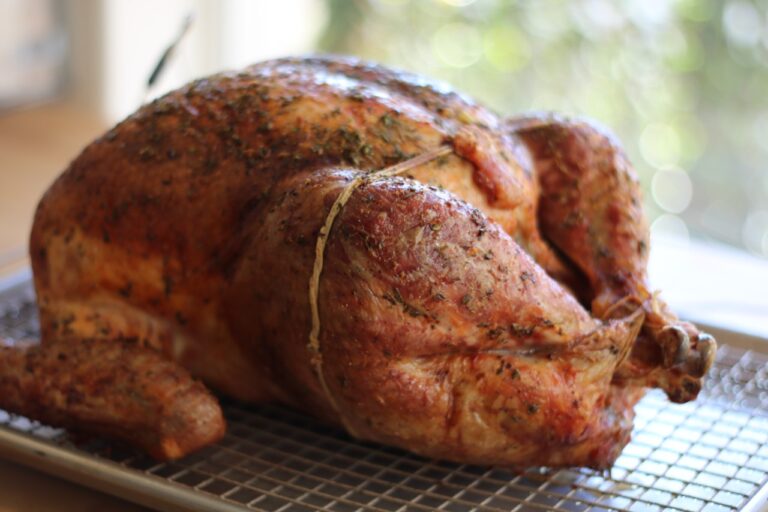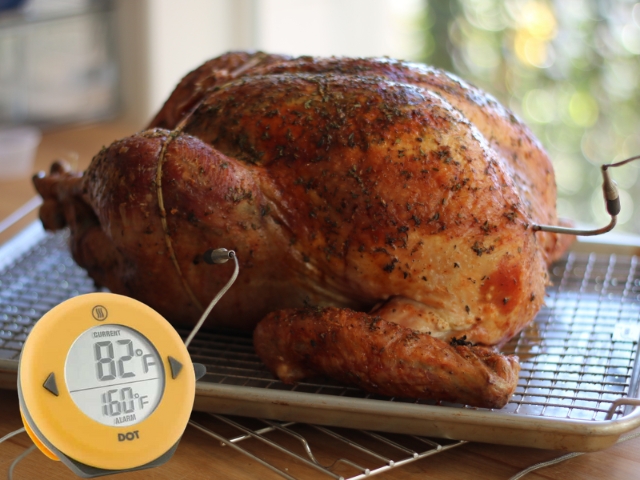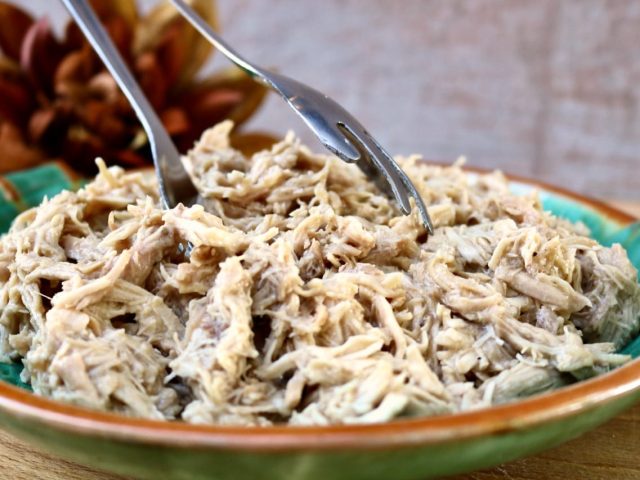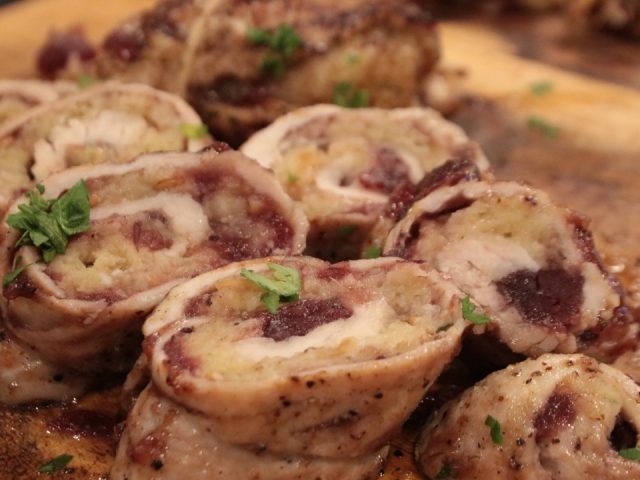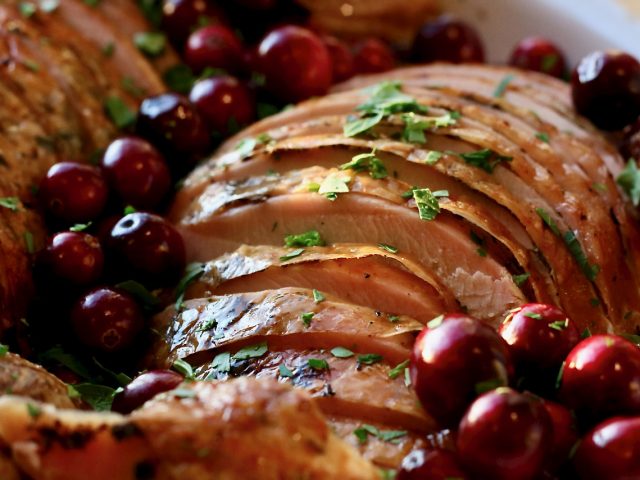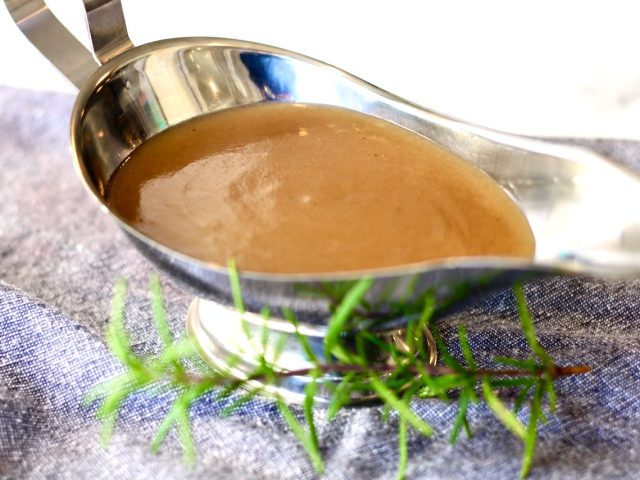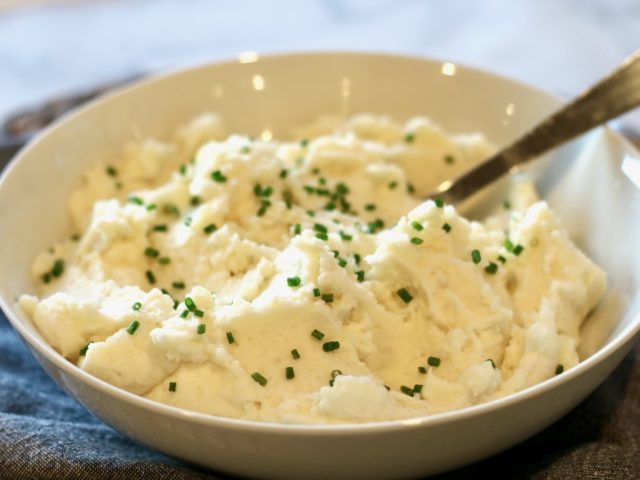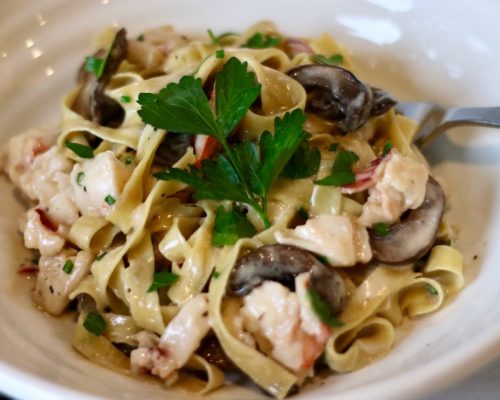Roasting a turkey has one major conundrum- how to get the white meat to reach 165°F and the dark meat to reach 180°F at the exact same time?! This is a nearly impossible task for any notable chef, let alone a home cook who deals with this challenge only once a year. Here are some helpful tips on how to achieve a perfectly cooked turkey.
🦃 Use probe thermometers to monitor temp
Temperatures, not times, are the only way you can accurately cook any roast. So the first think we need is reliable probe thermometers to be able to monitor the temperatures of the bird at all times.
I use a ThermoWorks DOT (well, actually I use two, which allows me to monitor two probes at once- one for the dark meat (goal 180°F) and one for the white meat (goal 165°F). Learn More about buying a Dot.
🦃Use ice packs to chill the breasts
Monitoring is great, but it doesn’t solve the problem of how to achieve two very different temps at the exact same time. In order to achieve different temperature, we need to slow the cooking time of the white meat. To do this, remove the bird from the fridge up to 4 hours before roasting. Cover the breasts with ziplock bags filled with ice, held together with a clip.
Icing down the breasts allows the legs, thighs and wings to come up to room temperature while the breasts chill. This results in a cook time lag on the breast meat of about 20-30 degrees during roasting. (Using a tin foil shield on the breasts in addition also helps control and slow the cooking of the breasts.)
The chilled breast meat will allow you to pull the turkey out of the oven when the white meat probe hits 157°F and the dark meat probe registers around 173°F, bringing them as close as possible to their individual goal temperatures of 165°F and 180°F after rest time.
🦃Plan a rest time of two hours
Remember to plan for rest time of about TWO HOURS. Yup, I said it! TWO HOURS. Once removed from the oven, the temperature will continue to rise up to 10 additional degrees and I promise you, the bird will stay hot! It is super insulated, and the longer it rests, the better it will be!
🦃Use a sheet pan, not a traditional roasting pan.
Ditch the traditional roasting pan and opt for a sheet pan. A high sided roasting pan doesn’t allow hot air to reach the part of the turkey that needs hot air to reach it the most. Instead, use a V-shaped rack set inside a sheet pan which allows the thighs to be lifted and hot air to circulate around them, or a sheet pan with a raised grid which also allows air to move evenly around the roast. Otherwise, you will end up with an over browned top, and a slower cooked and uncrispy bottom.
If you are looking for an even more detailed guide of turkey dos and don’ts, especially in regards to temperature, check out this blog post from Thermoworks.
